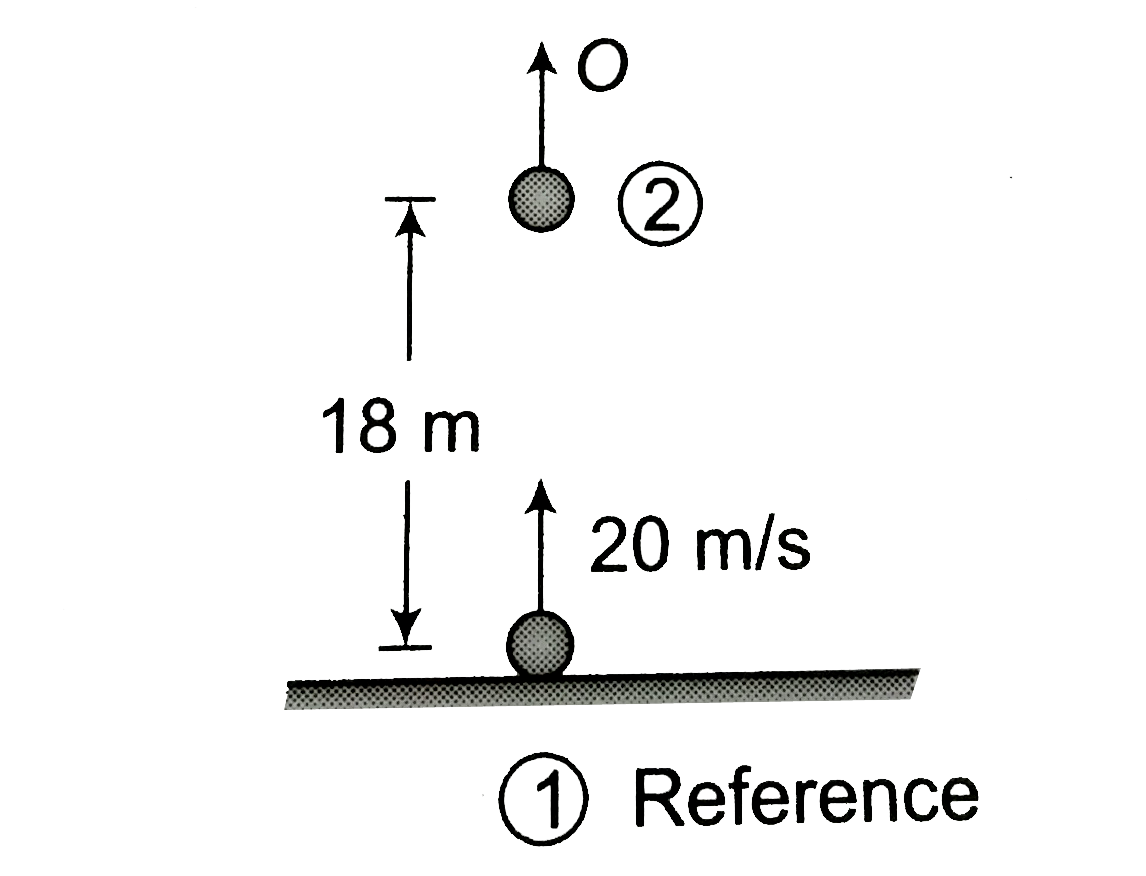A body of mass 1kg is thrown upwards with a velocity 20ms−1. It momentarily comes to rest after attaining a height of 18m. How much energy is lost due to air friction? (g=10ms−2)
20 J
30 J
40 J
10 J
The correct Answer is:A

K1+U1=K2+U2+Wf
Wf: work done against friction
12(1)(20)2+0=0+(1)(10)(18)+W
200=180+Wf
Wf=20J
Energy lost due to friction =20J
Topper's Solved these Questions
Similar Questions
A particle of mass 2 kg is projected vertically upward with a velocity of 20ms. It attains maximum height of 17 m. The loss in mechanical energy due to air drag is (g = 10 ms−2 )
View SolutionA body of mass 500 g is thrown upwards with a velocity 20ms−1 and reaches back to the surface of a planet after 20sec. Then the weight of the body on that planet is (Assume g to be constant) xN. Find x.
View Solution
Knowledge Check
A body of mass 1kg is thrown upwards with a velocity 20ms−1. It momentarily comes to rest after attaining a height of 18m. How much energy is lost due to air friction? (g=10ms−2)
A20JB30JC40JD10JA body of mass 10 kg initially at rest acquires velocity 10ms−1. What is the work done ?
A−500JB500 JC50 JD−50JA ball of mass 1 kg is thrown upwards with a velocity 10 ms−1 If air exerts an average resisting force 1 N, the velocity with which the ball returns to the thrower is
A10√1011B10√111C10√911D10 sqrt((9)/( 15))
A stone of 1kg is thrown with a velocity of 20ms−1 across the frozen surface of lake and comes to rest after travelling a distance of 50m. What is the force of friction between the stone and the ice?
View SolutionA stone of 1 kg is thrown with a velocity of 20ms−1 across the frozen surface of a lake and comes to rest after travelling a distance of 50 m. What is the force of friction between the stone and the ice ?
View SolutionAn object moving with a velocity of 50 ms−1 comes to rest after 20 s. What is its initial velocity ?
View SolutionA particle of mass 2 kg is projected vertically upward with a velocity of 20 m/s. It attains maximum height of 17 m. The loss in mechanical energy due to air drag is (g=10ms−2)
View SolutionA stone of mass 1 kg is thrown with a velocity of 20ms−1 across the frozen surface of a lake and it comes to rest after travelling a distance of 50m. What is the magnitude of the force opposing the motion of the stone?
View Solution
